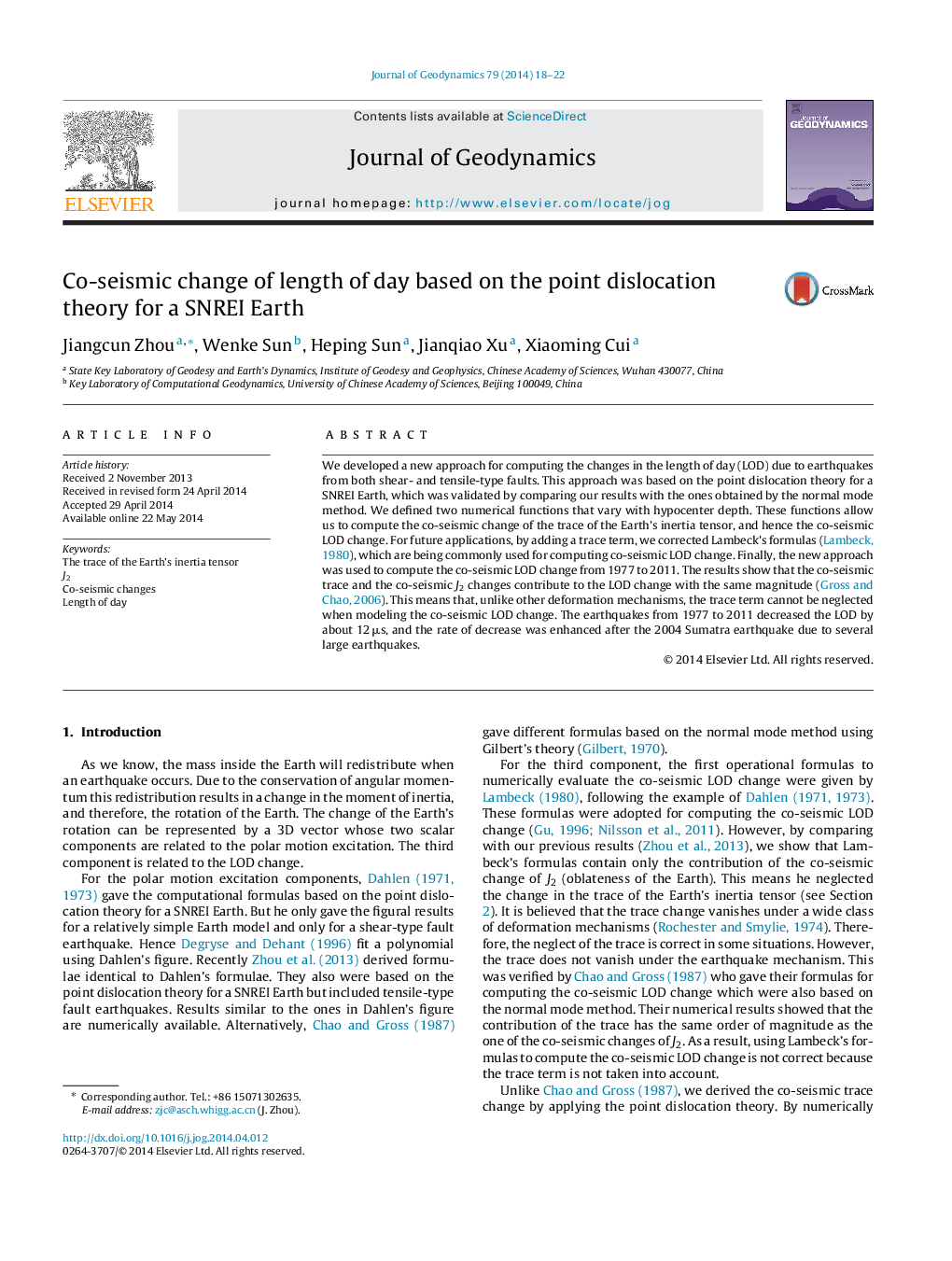| Article ID | Journal | Published Year | Pages | File Type |
|---|---|---|---|---|
| 4688099 | Journal of Geodynamics | 2014 | 5 Pages |
•A new approach for numerically computing the co-seismic trace change of the Earth's inertia tensor is proposed.•The formulas to computing the co-seismic length of day change are corrected.•The earthquakes occurred from 1977 to 2011 decreased the length of day by about 12 μs.•The decreasing rate of length of day due to earthquake became larger after the 2004 Sumatra earthquake.
We developed a new approach for computing the changes in the length of day (LOD) due to earthquakes from both shear- and tensile-type faults. This approach was based on the point dislocation theory for a SNREI Earth, which was validated by comparing our results with the ones obtained by the normal mode method. We defined two numerical functions that vary with hypocenter depth. These functions allow us to compute the co-seismic change of the trace of the Earth's inertia tensor, and hence the co-seismic LOD change. For future applications, by adding a trace term, we corrected Lambeck's formulas (Lambeck, 1980), which are being commonly used for computing co-seismic LOD change. Finally, the new approach was used to compute the co-seismic LOD change from 1977 to 2011. The results show that the co-seismic trace and the co-seismic J2 changes contribute to the LOD change with the same magnitude (Gross and Chao, 2006). This means that, unlike other deformation mechanisms, the trace term cannot be neglected when modeling the co-seismic LOD change. The earthquakes from 1977 to 2011 decreased the LOD by about 12 μs, and the rate of decrease was enhanced after the 2004 Sumatra earthquake due to several large earthquakes.
